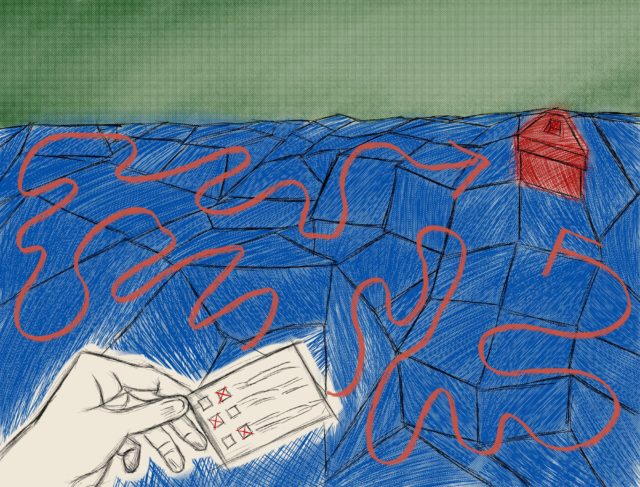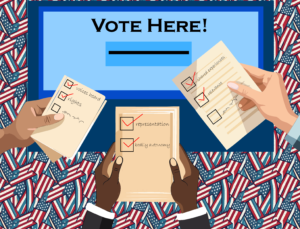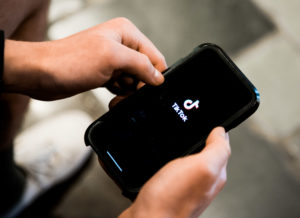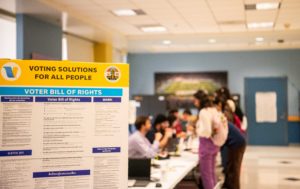This post was updated Oct. 29 at 8:32 p.m.
Endless ads, texts and campaigns bombard Americans with an identical message as Election Day approaches: Vote.
Yet, for younger voters, the process often creates a whirlwind of confusion.
While navigating the various nuances of voting in college, many students discover that an inevitable set of obstacles accompany their ballot.
For instance, although mail-in ballots ease the voting process by providing citizens with an option that does not require in-person voting, the greater level of complexity in requesting and submitting these ballots can pose challenges for new voters.
Political science doctoral student Michael Herndon, who also serves as a senior research fellow at the Latino Policy and Politics Institute, studies mail-in ballot rejections. According to Herndon, who is additionally a senior research fellow with the UCLA Voting Rights Project, the difficulties with mail-in ballots more often impact young voters compared to other age groups, perhaps largely due to their inconsistent signatures.
“Young people change their signature frequently. They’re still developing a signature,” Herndon said. “So the signature they used at the DMV when they’re 16 years old and got their driver’s license is different than the one they use to vote for the first time.”
Herndon recommends young voters match the signature on their ballot to the signature on their driver’s license as closely as possible to avoid ballot rejections.
As a nonpartisan, student-led voter coalition, BruinsVote works to encourage higher voter participation among UCLA students. Through her experience as BruinsVote chair, third-year English and public affairs student Chloe Garton has observed a vast number of barriers that affect various students in different ways when it comes to the voting process.
“UCLA is a very inaccessible campus, so getting to vote centers if you’re a student with a disability is really hard,” Garton said. “I also think that there are long lines on Election Day. There aren’t enough polling locations for the number of students that we have.”
Garton further emphasized that students tend to misunderstand the voter registration process, frequently expressing confusion as to why registration occurs earlier in the voting process or why it is necessary altogether.
“It’s just to certify that you’re an eligible voter before Election Day. But on actual Election Day, there’s something called conditional registration, and that means that you can register the day of,” Garton said.
Regardless, Garton recommends registering ahead of time to ensure that voters do not encounter any registration issues that compromise the eligibility of their ballot on Election Day.
However, even these preemptive measures can sometimes prove ineffective. Alisha Chowdhary, a second-year neuroscience student, still ran into some difficulties as an out-of-state student.
“End of September, I registered to vote in Illinois, and I was going to try to do a mail-in ballot,” Chowdhary said.
However, upon moving to her dorm on campus, she received a notice in the mail from her home county regarding her address change.
“They were asking me to mail a letter back to them with my address change, but I didn’t know they knew my address changed, so I was really confused,” Chowdhary said. “I didn’t know if it was actually from them or if it was some sort of spam letter.”
Shortly after, she discovered her registration status was declared inactive. Now, she faces a difficult choice between trying to vote in California or attempting to resolve the Illinois registration issues.
“I was going to concede and just vote in California, because I go to school here,” Chowdhary said. “But I want to vote for Illinois, because that’s where I’m from.”
Chowdhary believes that more voter resources on the Hill could prevent other out-of-state students from having the same difficulties.
Furthermore, for both Herndon and Garton, another large issue is the lack of time students can commit to voting on Election Day itself.
“The federal government should make Election Day a federal holiday,” Herndon said. “If we really, truly want a participatory democracy where people are participating at large rates, where 90-plus percent of Americans are voting – if we really want that, then why isn’t it a federal holiday?”
Establishing Election Day as a federal holiday carries a number of benefits for college students. Voting at on-campus centers poses an inconvenient and time-consuming task, given the centers’ lengthy wait times, which frequently conflict with class schedules. Similarly, between their many academic commitments, students generally lack the time to properly research all ballot items. A day off from classes reduces the opportunity cost of choosing civic participation over academics.
Nevertheless, one of the most difficult obstacles to overcome may have less to do with election administration.
Apathy towards elections – especially pertaining to those for local offices – stands as a large barrier between college students and their own civic engagement.
According to Garton, dissatisfaction with candidates running at the national level may have a role to play. When voters feel discontent with their options at the national level, they are more likely to turn away from voting altogether.
However, this creates a feedback loop. Voters are consequently neglecting to participate in their local elections, which then affects who eventually runs in future federal elections.
“The people who run for president, they don’t just spawn,” Garton said. “They were local candidates at one point for the most part. Who you vote for on the local level decides, in some ways, who’s going to be on the national level.”
Essentially, while mail-in ballots remain a useful tool in terms of expanding voter accessibility, they evidently carry their own set of challenges.
Nonetheless, by expanding awareness of voter resources in densely populated student areas such as the Hill, increasing communication regarding specific voting policies and classifying Election Day as a federal holiday, the improvement of voting processes for college students remains an attainable goal.
While these changes may not take place in the immediate future, the voting process also significantly relies on the enthusiasm of its participants. Simply put, where students maintain a steadfast commitment to civic duty, college voter turnout improves.
“When you were younger, you think, ‘Oh, that’s so cool that we get to vote for our president,’” Garton said. “When you get older, you get more disappointed and disenfranchised. It’s important that we remember that it is awesome that we get a vote.”
Elections may appear daunting – and even hopeless – at times, but participation in the present shapes the political landscape of the future.
Although the process comes with its burdens, voting ultimately remains a privilege – albeit, one worth celebrating.






Comments are closed.